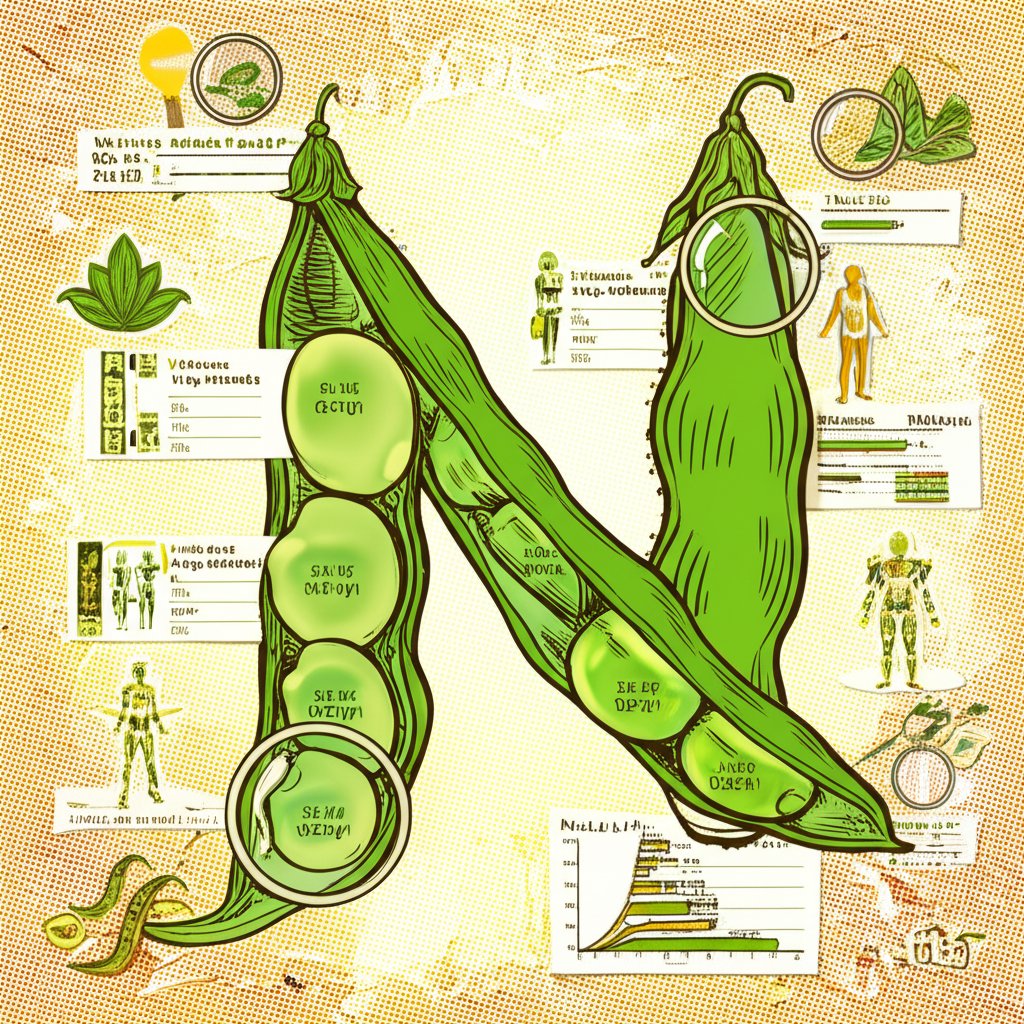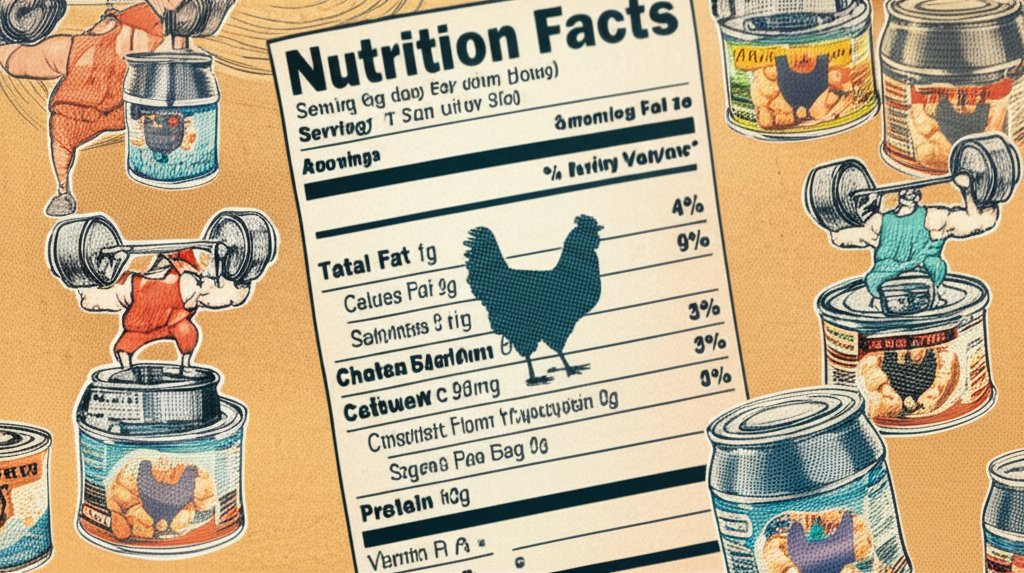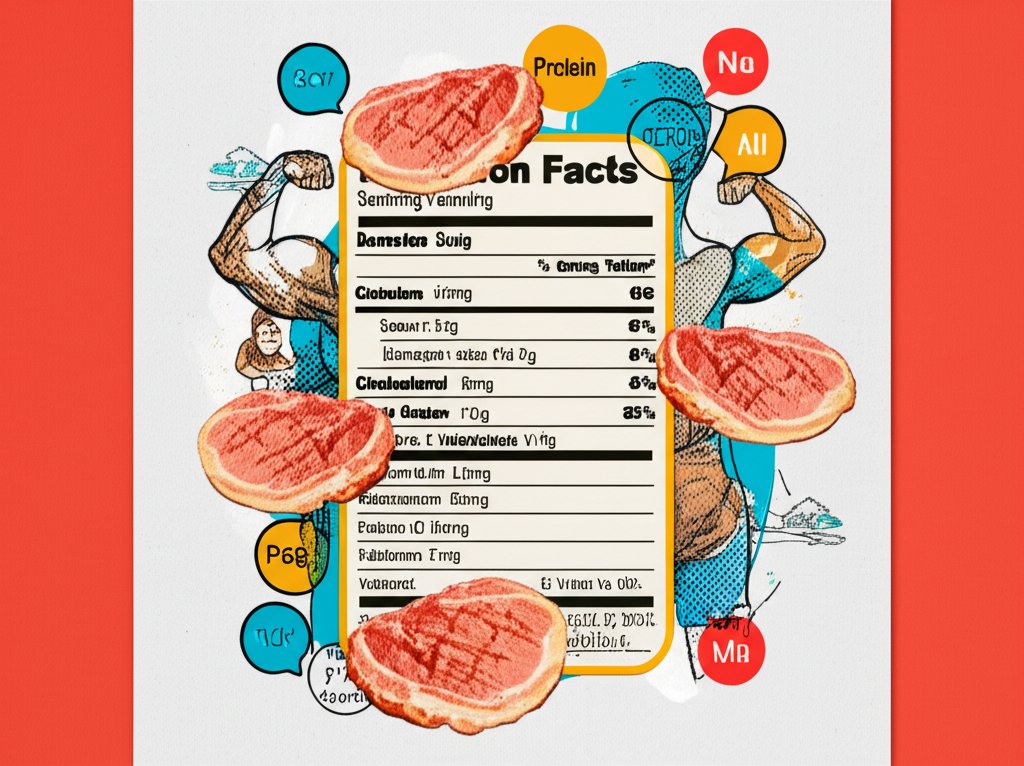Craving a satisfying meal that’s also good for you? Boneless pork chops are a versatile option, but understanding the boneless pork chops nutrition facts is key to making them a regular part of your healthy eating plan. This guide breaks down everything you need to know, from calorie counts and protein content to smart shopping and cooking tips.
At a Glance:
- Boneless pork chops are a good source of lean protein, essential for muscle building and repair.
- Calorie and fat content vary based on the cut, so choose wisely (loin chops are leaner).
- They’re packed with vitamins and minerals, including B vitamins, zinc, and selenium.
- Healthy cooking methods like grilling, baking, and broiling can minimize added fats.
- A 3-4 ounce serving is a good portion size for a balanced meal.
What’s in a Boneless Pork Chop? A Nutritional Deep Dive
Boneless pork chops are a popular dinner choice, but what exactly are you getting nutritionally? Let’s break it down:
- Calories: A 3-ounce serving typically contains between 140 and 200 calories. Factors like the cut of pork and cooking method will affect the final calorie count. For example, a serving of boneless pork chop contains only 41 calories.
- Protein: This is where pork chops shine! Expect 22-26 grams of protein per 3-ounce serving. This high-quality protein provides all nine essential amino acids your body needs.
- Fat: The fat content is variable. Loin chops are leaner than rib chops, so opting for loin cuts is a great way to reduce your fat intake. Trimming any visible fat before cooking also helps.
- Carbohydrates: Pork chops are essentially carbohydrate-free, making them a good choice for low-carb diets.
- Vitamins and Minerals: Pork chops boast a good range of micronutrients, including:
- B Vitamins (B12, B6, Thiamin): Essential for energy production and nerve function.
- Zinc: Supports immune function and wound healing.
- Selenium: An antioxidant that protects cells from damage.
- Phosphorus: Important for bone health.
- Iron: Helps carry oxygen in the blood.
To put it another way the % Daily Value (DV) tells you how much a nutrient in a serving of food contributes to a daily diet. 2,000 calories a day is used for general nutrition advice.
Cut Matters: Choosing the Leanest Pork Chop
Not all pork chops are created equal. The cut significantly impacts the fat content and overall nutritional profile. Here’s a quick guide:
- Loin Chops (Sirloin, Tenderloin, Center-Cut): These are your leanest options. They come from the loin, which runs along the pig’s back. Center-cut chops offer a good balance of lean meat and flavor. A 3-ounce loin chop has about 120–140 calories and 22 grams of protein.
- Rib Chops: These are more tender than loin chops due to higher fat content. While delicious, they’re not the best choice if you’re watching your calorie intake.
- Blade Chops (Shoulder Chops): These are often the most flavorful (and cheapest) but also the fattiest.
Pro Tip: When shopping, look for chops that are pinkish-red in color with minimal marbling (the white streaks of fat within the meat). A rosy-red hue with white fat means freshness. Grayish tones signal age.
Pork Chops vs. Other Protein Sources: A Quick Comparison

How do boneless pork chops stack up against other popular protein choices?
- Pork vs. Chicken: A 3-ounce pork loin has a similar protein content to chicken breast but offers more thiamin and zinc. Chicken Nutrition: Canned Goods is versatile, but sometimes you just need a richer flavor.
- Pork vs. Beef: Lean pork competes well with beef in iron content and often has less saturated fat, especially when you choose cuts like tenderloin.
- Pork vs. Plant-Based Protein: While plant-based proteins like Broad beans: Nutritional powerhouse are excellent sources of fiber and other nutrients, pork chops offer a complete protein source with all essential amino acids.
Ultimately, the best choice depends on your individual needs and preferences. A varied diet incorporating different protein sources is generally recommended.
Cooking Methods: Maximizing Nutrition, Minimizing Fat
How you cook your pork chops dramatically impacts their nutritional value. Here are some tips for healthy cooking:
- Grilling: Grilling allows fat to drip away, resulting in a leaner final product.
- Baking/Roasting: Baking or roasting without added oils is another excellent way to preserve nutrients and minimize fat.
- Broiling: Similar to grilling, broiling uses high heat to cook the pork quickly, reducing the need for added fats.
- Air Frying: Air fryers can create crispy edges with significantly less oil than traditional frying.
- Avoid Frying: Frying adds extra calories and unhealthy fats. If you must fry, use a healthy oil like olive oil sparingly.
Important: Always cook pork to an internal temperature of 145°F (63°C) as recommended by the USDA. Use a meat thermometer to ensure accuracy. Let the meat rest for 3 minutes after cooking to allow the juices to redistribute, resulting in a more tender and flavorful chop.
Smart Shopping: Choosing Quality and Sourcing

Where you buy your pork chops can also impact their nutritional profile. Consider these factors:
- Organic vs. Conventional: Organic pork comes from pigs raised without synthetic additives or antibiotics. Look for USDA-certified organic brands like Niman Ranch or Applegate.
- “Natural” Labels: “Natural” generally means minimal processing, but the term isn’t as strictly regulated as “organic.”
- Pasture-Raised: Pork from pasture-raised pigs often has a more balanced omega-3 fatty acid profile due to their diet.
- Transparency: Choose brands that are transparent about their farming practices, including antibiotic and hormone use. Brands like Whole Foods 365 or Hormel Natural Choice prioritize transparency.
Expert Quote: “Organic pork often has a more balanced omega-3 profile due to pasture-raised diets,” says Dr. Emily Carter, a registered dietitian. Always review antibiotic and hormone use disclosures.
Serving Size and Meal Planning: Creating a Balanced Plate
A standard pork serving size is 3-4 ounces cooked. To create a balanced meal, pair your pork chop with:
- Vegetables: Add plenty of colorful vegetables for fiber, vitamins, and minerals.
- Whole Grains: Choose whole grains like brown rice, quinoa, or whole-wheat bread for sustained energy.
- Healthy Fats: While pork chops contain some fat, consider adding a small amount of healthy fats from sources like avocado or olive oil.
Example Meal: A 3-ounce grilled pork loin chop, a side of roasted broccoli, and a serving of quinoa make a complete and nutritious meal.
Common Questions About Pork Chop Nutrition
- Are pork chops high in cholesterol? Pork chops do contain cholesterol, but dietary cholesterol has less impact on blood cholesterol levels than saturated fat. Choosing lean cuts and trimming visible fat can help minimize your cholesterol intake.
- Are pork chops a good source of protein for building muscle? Absolutely! The high-quality protein in pork chops provides the essential amino acids needed for muscle repair and growth.
- Can I eat pork chops if I’m on a diet? Yes, but portion control and cooking methods are key. Choose lean cuts and avoid frying to keep the calorie count down.
- Are all pork chops the same in terms of nutrition? No. As discussed earlier, the cut of pork significantly impacts the nutritional profile. Loin chops are generally leaner than rib chops.
- How can I tenderize pork chops without adding salt? Marinate pork chops in acidic juices like lime or lemon juice. This helps break down the proteins and tenderize the meat naturally.
Maximizing the Health Benefits of Boneless Pork Chops
Now that you understand the boneless pork chops nutrition facts, here are some final tips for making them a healthy and delicious part of your diet:
- Choose lean cuts: Opt for loin chops like sirloin or tenderloin whenever possible. Check the marbling: a small amount of intramuscular fat enhances flavor but prioritize leaner options for lower calorie intake.
- Trim excess fat: Remove any visible fat before cooking to reduce your intake of saturated fat.
- Use healthy cooking methods: Grilling, baking, broiling, and air frying are all excellent choices.
- Control portion sizes: Stick to a 3-4 ounce serving to maintain a balanced calorie intake.
- Pair with nutritious sides: Load up on vegetables and whole grains to create a complete and satisfying meal.
- Marinate for flavor and tenderness: Use healthy marinades to enhance the flavor and tenderness of your pork chops without adding extra salt or fat.
- Read labels carefully: Pay attention to labels like “organic,” “natural,” and “pasture-raised” when shopping for pork chops.
By following these tips, you can enjoy the many nutritional benefits of boneless pork chops while maintaining a healthy and balanced diet.
- The Best Bento Box Price For Your Perfect Packed Lunch - December 15, 2025
- Bento Box Shopping Tips for Smart and Stylish Lunch Prep - December 14, 2025
- Bento Box Trays Streamline Restaurant Meal Presentation and Transport - December 13, 2025










